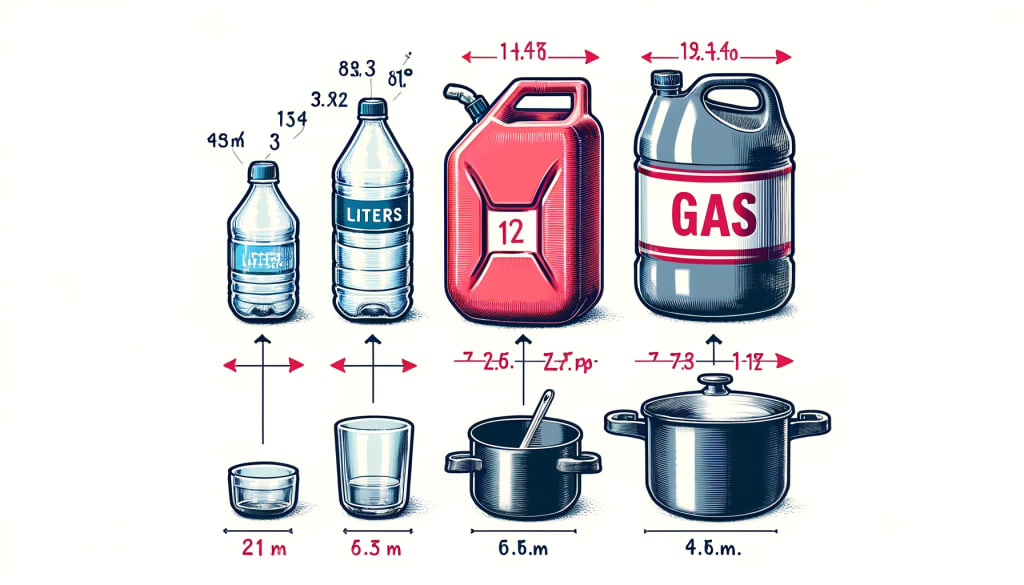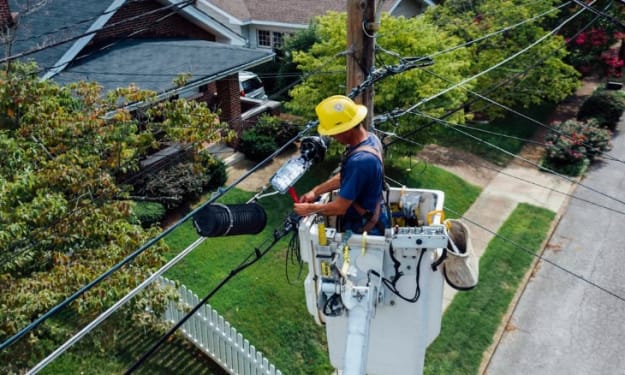Understanding Volume Measurements: Liters vs. Gallons
Exploring the Differences Between Liters and Gallons and Answering the Question: Is 4 Liters Equal to One Gallon?

When dealing with liquid measurements, especially in a global context, it's essential to understand how different units compare. Two of the most common units for measuring volume are liters and gallons. These units are used in various contexts, such as cooking, automotive fluids, and even daily hydration. This article will delve into the specifics of how many liters are in a gallon, whether 4 liters equals one gallon, and which measurement is greater: 4 liters or one gallon.
The Basics of Volume Measurement
Volume measurement is crucial in many fields, including science, industry, and daily life. It helps in quantifying the amount of space that a substance (solid, liquid, or gas) occupies. Among the numerous units used to measure volume, liters and gallons are particularly prominent.
Litres
The liter (or litre, in British English) is a metric unit of volume. It is widely used around the world, particularly in countries that have adopted the metric system. The liter is defined as:
- **1 liter = 1 cubic decimeter (dm³)**
- **1 liter = 1,000 cubic centimeters (cm³)**
- **1 liter = 1,000 milliliters (ml)**
The metric system's simplicity and coherence make it easy to convert between units. For instance, moving from milliliters to liters involves dividing by 1,000.
Gallons
The gallon is a unit of volume commonly used in the United States and, to a lesser extent, in the United Kingdom. However, there are different definitions of a gallon in these two regions:
- US Gallon: Defined as 231 cubic inches or approximately 3.78541 liters.
- UK Gallon (Imperial Gallon): Defined as 277.419 cubic inches or approximately 4.54609 liters.
Given these different definitions, it's crucial to specify which gallon is being referred to in any conversion or comparison.
Converting Gallons to Liters
To understand how many liters are in a gallon, we need to look at the specific conversions:
- 1 US Gallon = 3.78541 liters
- 1 UK Gallon = 4.54609 liters
Example Conversion
If you have 5 US gallons and want to convert them to liters, you would calculate:
\[ 5 \, \text{US gallons} \times 3.78541 \, \frac{\text{liters}}{\text{gallon}} = 18.92705 \, \text{liters} \]
Similarly, for UK gallons:
\[ 5 \, \text{UK gallons} \times 4.54609 \, \frac{\text{liters}}{\text{gallon}} = 22.73045 \, \text{liters} \]
Does 4 Liters Equal 1 Gallon?
Given the conversion factors, we can determine whether 4 liters equals one gallon:
- **1 US Gallon ≈ 3.78541 liters**
- **1 UK Gallon ≈ 4.54609 liters**
Therefore, 4 liters is close to but not exactly equal to either the US or UK gallon. Specifically:
- 4 liters is slightly more than 1 US gallon (since 1 US gallon is approximately 3.78541 liters).
- 4 liters is slightly less than 1 UK gallon (since 1 UK gallon is approximately 4.54609 liters).
To visualize this:
- **4 liters ≈ 1.05669 US gallons**
- **4 liters ≈ 0.87988 UK gallons**
This indicates that while 4 liters is nearly equivalent to a gallon, the type of gallon (US or UK) determines whether it is greater or less.
Which Is Greater: 4 Liters or One Gallon?
To answer this question comprehensively, we need to compare 4 liters to both the US gallon and the UK gallon.
Comparing 4 Liters to a US Gallon
- **4 liters ≈ 1.05669 US gallons**
In this case, 4 liters is greater than one US gallon by approximately 0.05669 gallons.
Comparing 4 Liters to a UK Gallon
- **4 liters ≈ 0.87988 UK gallons**
Here, 4 liters is less than one UK gallon by approximately 0.12012 gallons.
Practical Implications
Understanding these conversions and comparisons is essential in many practical scenarios. For instance, when filling up a car's gas tank, cooking using recipes from different countries, or measuring out beverages, knowing the precise volume conversions can prevent mistakes and ensure accuracy.
Automotive Fluids
When dealing with automotive fluids, the distinction between liters and gallons becomes crucial. For example, oil changes and coolant top-ups often require precise measurements. If a vehicle's manual specifies the capacity in liters, and the available containers are in gallons, correct conversion is necessary to avoid overfilling or underfilling.
Cooking and Baking
In the kitchen, especially when following international recipes, knowing the conversions between liters and gallons can help achieve the desired results. For example, a British recipe calling for a gallon of liquid will require more volume than an American recipe with the same measurement.
Hydration and Health
Daily hydration guidelines often use liters. For instance, it's common advice to drink about 2 liters (or half a gallon) of water per day. Understanding these conversions can help ensure adequate hydration, particularly when traveling between countries using different measurement systems.
Detailed Comparison: Liters vs. Gallons
To further clarify the differences and uses of these units, let’s dive deeper into some contexts where they are commonly used:
Beverage Industry
In the beverage industry, packaging and labeling often differ by region. For example, soft drinks and bottled water might be sold in liters or gallons depending on the market.
- **Liters**: Common in Europe, Asia, and most parts of the world.
- **Gallons**: Predominantly used in the US.
Example: Bottled Water
A standard bottled water size might be 500 ml (0.5 liters). In the US, larger sizes might be labeled in gallons, such as 1-gallon jugs for home use. Understanding these sizes helps consumers make informed purchasing decisions.
Fuel Efficiency and Consumption
Fuel efficiency ratings are another area where liters and gallons are crucial:
- **Liters per 100 kilometers (L/100 km)**: Common in Europe and Canada.
- **Miles per gallon (MPG)**: Common in the United States.
Conversion for Understanding
To compare fuel efficiency between a European car and an American car, conversion between these units is necessary. For example, 1 US gallon is about 3.78541 liters, so a car that gets 30 MPG in the US would get approximately 7.84 L/100 km.
Environmental and Scientific Research
In scientific research, precise measurements are critical. Experiments involving liquids often use liters and milliliters for accuracy.
Example: Chemical Solutions
When preparing chemical solutions, knowing the exact volume in liters or milliliters ensures the correct concentration. In fields like chemistry and biology, the metric system (liters, milliliters) is universally used for its precision and ease of conversion.
Conclusion
In conclusion, while 4 liters is a substantial volume, it does not exactly equal one gallon in either the US or UK measurement systems. Understanding the differences between these units is crucial in various practical contexts, from cooking to automotive maintenance and scientific research.
- **4 liters > 1 US gallon** (approximately 1.05669 US gallons)
- **4 liters < 1 UK gallon** (approximately 0.87988 UK gallons)
This nuanced understanding of volume measurements can help in accurate and effective usage in everyday life and professional settings. As global interactions increase, so does the importance of mastering these conversions, ensuring clarity and precision across different measurement systems.
About the Creator
Enjoyed the story? Support the Creator.
Subscribe for free to receive all their stories in your feed. You could also pledge your support or give them a one-off tip, letting them know you appreciate their work.





Comments
There are no comments for this story
Be the first to respond and start the conversation.